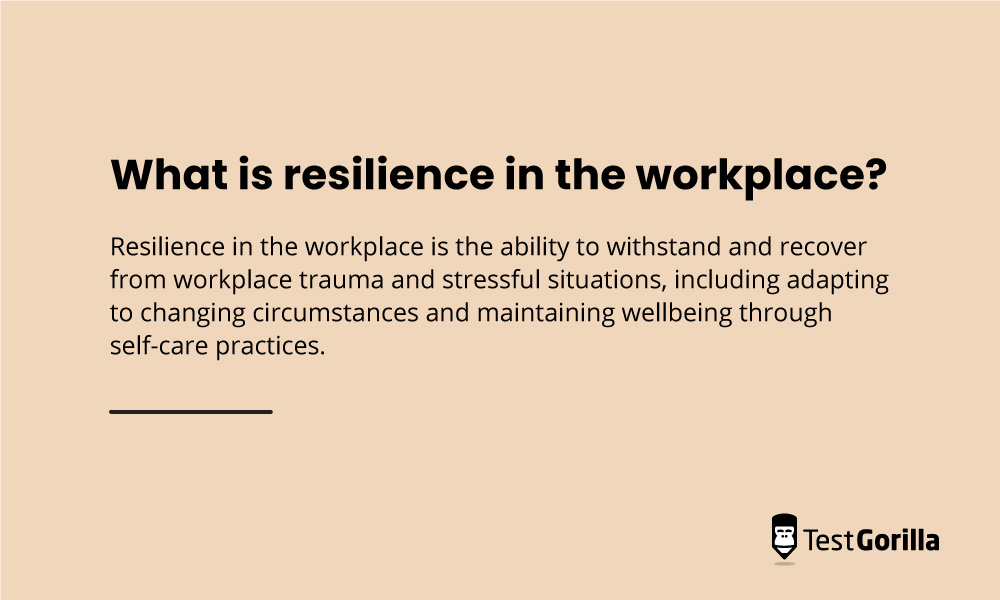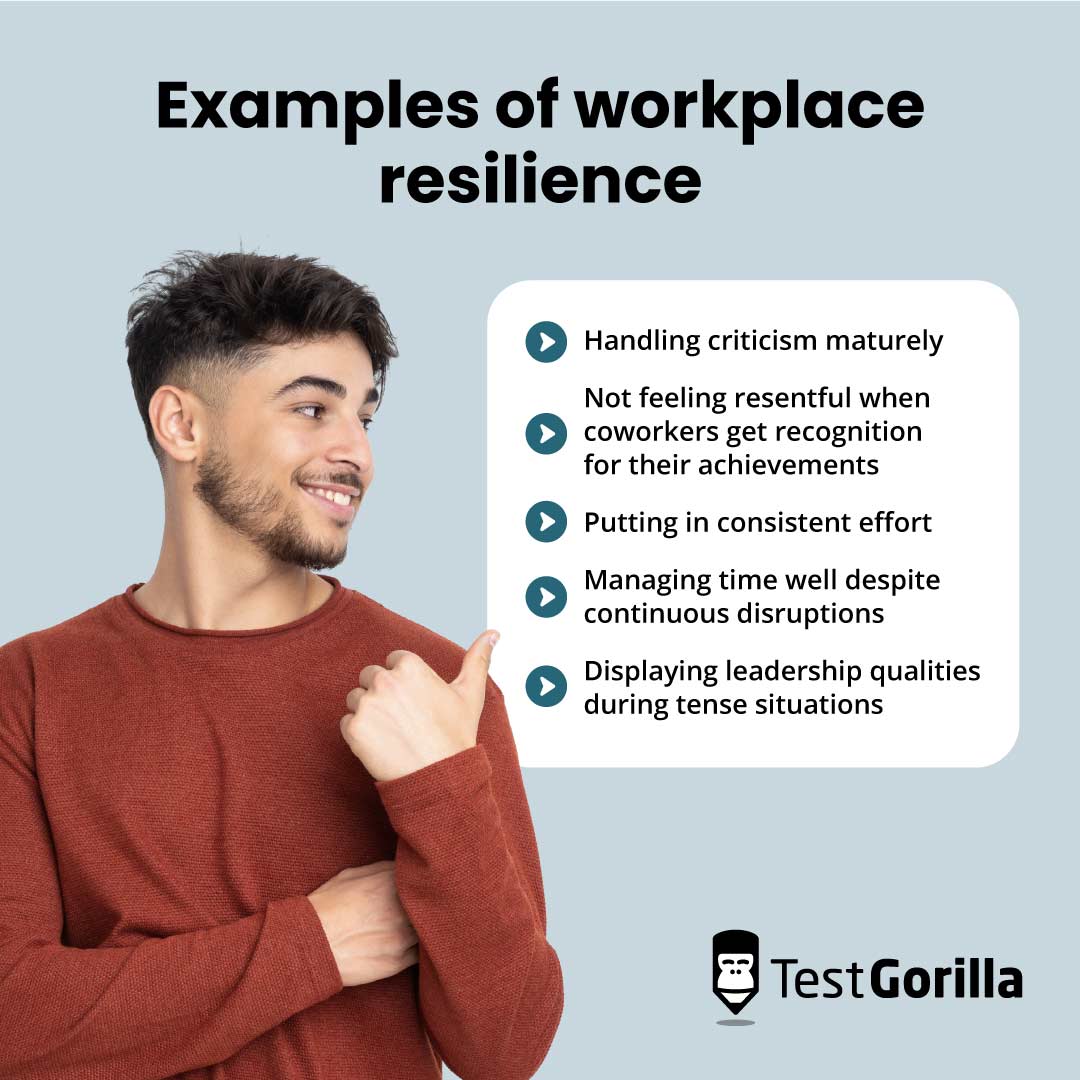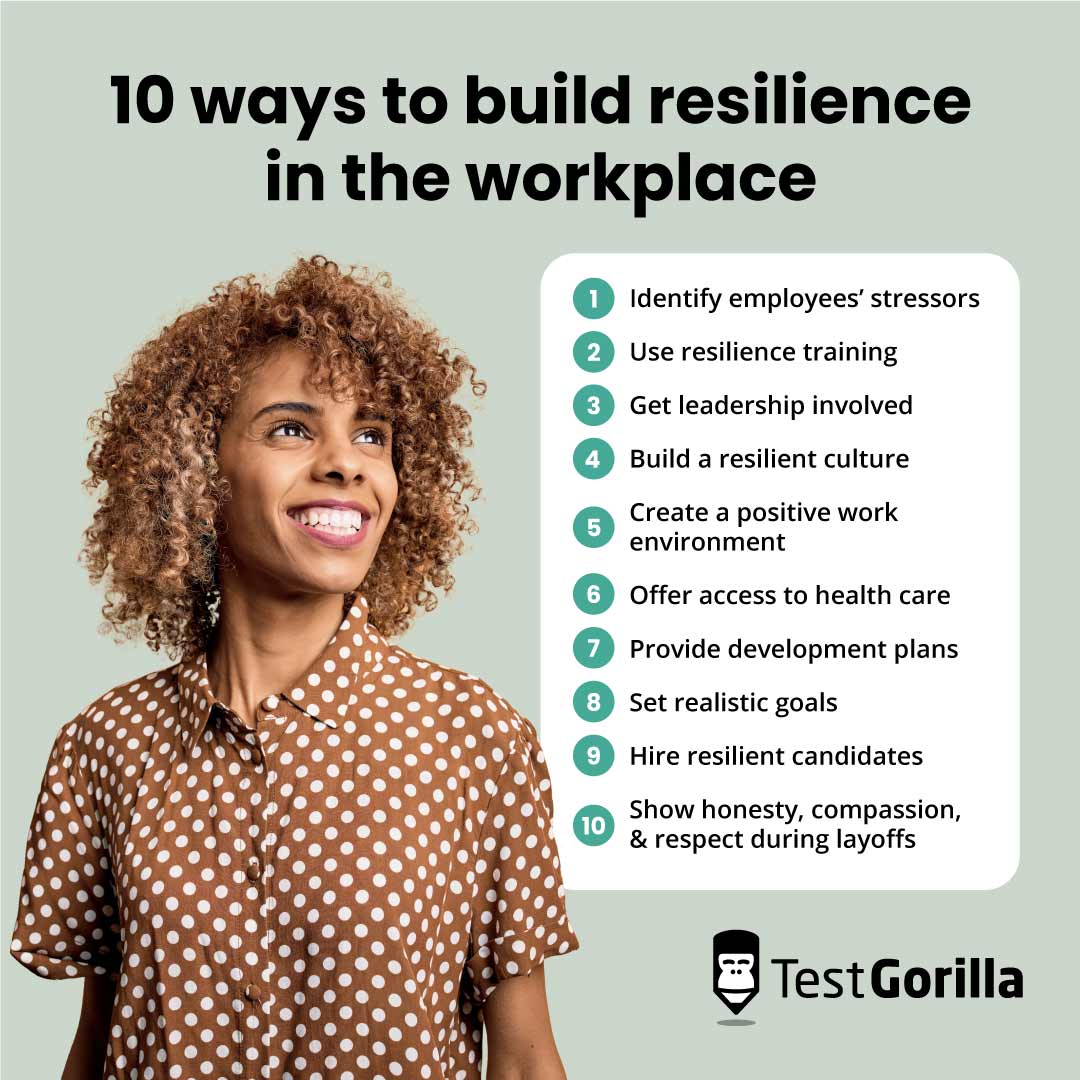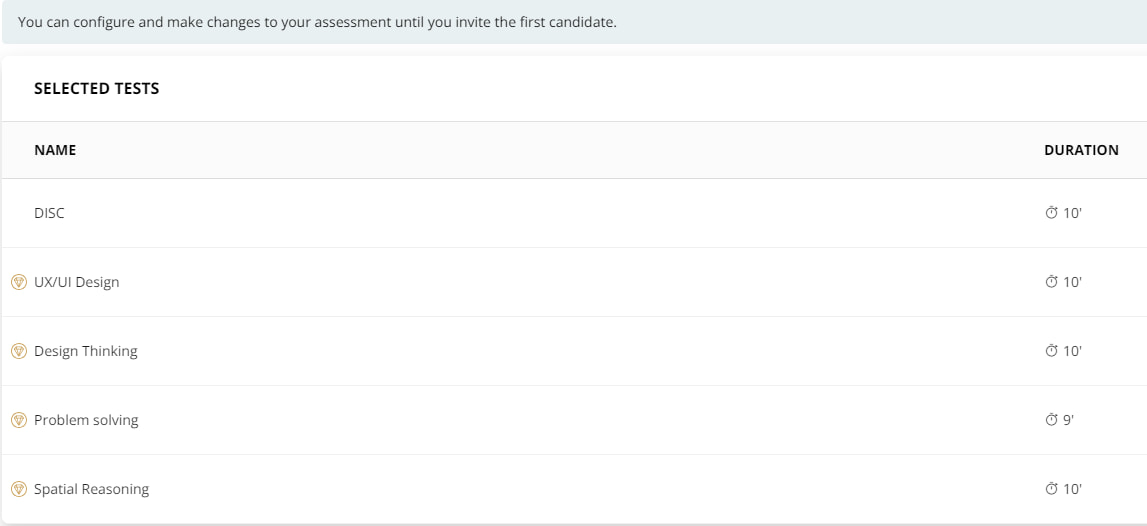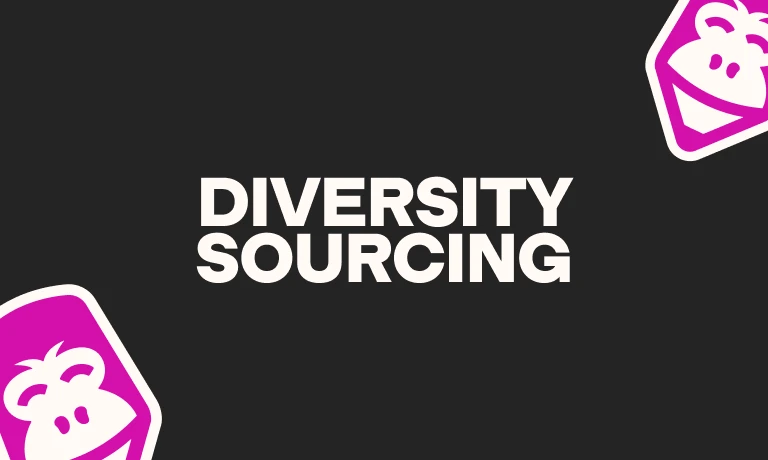Building resilience in the workplace: 10 tips for fostering a strong company culture
Employee stress and work-life balance are two major issues employers face today. Research has found that 44% of workers experience high stress levels, fatigue, and feelings of losing control at work.[1]
As jobs become increasingly demanding, stress at work is getting all the more difficult to handle.
Since the intensity and pace of today’s work culture are not likely to decrease, it is more important than ever to build resilience and ensure quiet thriving for your employees.
Resilience in the workplace refers to your workforce’s ability to bounce back from difficult situations and adapt to changing circumstances.
Studies have shown that resilience in the workplace positively correlates with better health, self-esteem, and job satisfaction. It also increases employee motivation and productivity.[2]
In this guide, we offer strategies to help you hire resilient employees and create a workplace where resilience thrives.
What is resilience in the workplace?
Resilience in the workplace is the ability to withstand and recover from workplace trauma and stressful situations, including adapting to changing circumstances and maintaining wellbeing through self-care practices.
It entails the ability to welcome change and uncertainty as opportunities rather than threats and to maintain a calm attitude in tough situations.
It also helps employees remain engaged and create a support network with peers in the workplace. Social networks further improve psychological resilience and create a positive work environment.
Examples of workplace resilience
There are many ways employees can be resilient at work. Resilient employees persevere in the face of difficulties rather than feeling fearful of change.
Examples of workplace resilience include:
Handling criticism maturely instead of becoming defensive
Not feeling resentful when coworkers get recognition for their achievements
Putting in consistent effort even when validation or acknowledgment is not forthcoming
Managing time well despite working in an environment with continuous disruptions like an open office
Displaying leadership qualities during tense situations or crises
However, it is important to clarify that accepting abuse and not reacting outwardly to being treated poorly by coworkers, bosses, or even customers is not an example of resilience.
Employees should never be expected to accept or endure abuse.
Why is resilience important in the workplace?
Resilience in the workplace is important because it enables you to do more than bounce back from disruptions. When you’re resilient, you can also bounce forward.
For example, organizations with healthy, resilient behavior were better able to handle the major disruptions of 2020 and 2021.
Let’s look at an overview of the importance of resilience in the workplace.
Reason | Why it’s important |
1. Improves employee wellbeing and decreases absenteeism | In a study of more than 400,000 people in 63 countries, researchers found that autonomy and resilience are linked to wellbeing more than wealth. [3] This research shows that having control over what happens at work is more important to employees than how much they earn Moreover, improved wellbeing through wellness initiatives reduces absenteeism by an average of 25.3%. [4] |
2. Reduces chance of employee burnout and helps reduce stress | Resilience includes being able to find meaning in your work, which is one of the ways to decrease stress and prevent burnout. For example, research found that burnout risks decrease in clinicians who can spend at least 20% of their time focused on what means to them in their work. [5] |
3. Increases performance and productivity and builds a workforce that supports peers | Without resilience, conflict can thrive because coworkers have different backgrounds, likes, and dislikes. Resilience helps build a workforce that supports peers because empathy triggers it. A study of 2,063 individuals showed that resilience has a protective effect on productivity even in high-strain work environments. [6] |
4. Improves working relationships, self-esteem, and sense of control | Self-esteem is the belief in one’s own abilities and worth and goes hand in hand with having a sense of control. Working relationships improve when employees trust themselves and feel empowered. Resilient people can handle challenges better because they trust themselves, which further builds their self-esteem. [7] |
5. Leads to greater job satisfaction and employee engagement, increasing loyalty and happiness at work | Resilience also has a favorable outcome on job satisfaction and the likelihood of depression. [6] When employees associate work with a positive environment and are happy about their jobs, their engagement increases, and they become loyal to their employers. |
6. Boosts adaptability and agility | Agility and adaptability help team members move into new roles and learn new skills quickly. An agile organization can weather risks, uncertainty, and disruption while boosting retention. More than 90% of employees who call themselves resilient say they want to stay with their employer, and 86% feel motivated to work every day. |
The best insights on HR and recruitment, delivered to your inbox.
Biweekly updates. No spam. Unsubscribe any time.
Building resilience in the workplace: 10 methods
Now that you understand the benefits of resilience and wellbeing in the workplace, it’s time to look at ways to build and improve it in your company. Below, we show you 10 best practices to build resilience and create a culture that encourages motivation and productivity.
10 methods to build resilience in the workplace: A summary
The method | What it accomplishes |
1. Identify your employees’ stressors | Enables you to address main stress factors through your workplace policies |
2. Use resilience training | Teaches your workers the best ways to become more resilient and manage their stressors |
3. Get leadership involved | Trains managers to lead by example and actively contribute to a resilience program |
4. Build a resilient culture | Creates psychological safety and trust in the workplace so employees can thrive |
5. Create a positive work environment | Combats burnout and promotes employee recognition and wellbeing at work |
6. Offer access to health care and wellbeing opportunities | Ensures your employees are aware of all the physical and mental health resources you provide in your benefits package |
7. Provide professional development plans for each employee | Offers workers a clear career growth plan and improves their opinion of your company |
8. Set clear expectations and realistic goals | Reduces stress and apprehension in your workforce and makes employees feel respected |
9. Hire resilient candidates with talent assessments | Enables you to select candidates with resilience attributes and skills, like adaptability and the ability to thrive in jobs with high levels of disruption |
10. Show honesty, compassion, and respect during layoffs | Shows your dedication to your company’s values and how resilient your culture is when faced with a crisis |
1. Identify your employees’ stressors
Before you can reap the benefits of resilience in the workplace, you need to identify the factors that stress your employees.
More than 65% of workers consider work itself a significant source of stress. Stress is a risk you can assess by identifying the contributing factors and working to reduce or eliminate them.
To identify stress at work, you can:
Hold 1:1 meetings to discuss each employee’s particular challenges
Send out pulse surveys regularly to understand team concerns
Ask employees to complete anonymous work satisfaction surveys to identify trends
Look at employee records to see whether absenteeism is an issue or workers take excessive sick leave
Spend time observing your employees actively working to see if there are obvious tensions between them
Give your employees an adequate work-life balance
When you have a list of the main factors that stress your employees, you can develop policies to address them, improve employee wellbeing, and build workplace resilience and a healthy culture.
Besides developing policies, you should immediately address any issues you identify between workers. Allowing conflicts between employees to fester can cause a toxic environment for everyone in the workplace.
2. Use resilience training
Once you’ve identified the main sources of stress, you can use resilience in the workplace training to improve your workers’ ability to thrive at work.
Resilience training in the workplace shows your staff how to adapt to difficult situations by teaching them personal resilience skills. It creates a mindset that encourages positive thinking and motivation.
After receiving resilience training, workers often feel the ability to overcome and reduce negative emotions faster after an event and experience fewer negative thoughts and an increase in their quality of life.[8]
Because workplace stressors are never-ending, this training should not be a one-off event. Ensure your new employees understand being resilient in the workplace as soon as they come on board, and offer regular refreshers for existing employees.
Here are some examples of training you can add to your resilience at work toolkit:
Making a list of each employee’s most common obstacles and stressors and using problem-solving to address them
Holding mindfulness and positive thinking seminars and workshops
Establishing support groups to enable workers to work through issues with their peers
Having policies that promote team resilience and a positive culture
Offering free resources, like resilience webinars and TEDtalks
Holding live seminars with experts in the field
You should also consider metrics you can use to measure the effectiveness of your resilience training.
Look at trends like a reduction in absenteeism or an increase in employee engagement to gauge the success of your training initiatives.
3. Get leadership involved
Your resilience training is unlikely to succeed unless you get leadership buy-in.
Your senior managers must lead by example to inspire employees to follow their behavior. When you train team leaders to display resilience, they can activate resilience throughout your organization.
Ensure managers pay attention to employees’ work-life balance and stress levels.
Provide leadership with resilience training to help them understand the relationship between resilience and stress and improve their ability to maintain control under pressure.
Managers who understand resilience have better listening skills, empathy, and understanding of how to respond to each situation.
Promote resilience in leadership by encouraging inclusive managers to lead from the top and set a good example of personal and team boundaries.
To do this, you can measure leaders’ success by the same metric you use for employees to put them on an even playing field.
Once they are on board, managers can help you build a comprehensive resilience program and a culture of adaptability and resilience in the workplace.
4. Build a resilient culture
A resilient culture adapts to changing circumstances and thrives in the face of adversity. When resilience becomes a core value of your workplace culture, your organization is better equipped to tackle challenges and find success.
To build a resilient culture, make a corporate statement that addresses resilience and employee support as core principles in your business and take action to make them happen.
For example, you can train managers to display a transparent management style and support their workers’ wellbeing.
You can also promote an open-door policy and invite people to talk about their issues, which encourages trust in the workplace.
In addition, take the following steps to build a resilient culture:
Invest in training and development programs like upskilling and reskilling
Encourage continuous learning through peer-to-peer learning groups
Use open and honest communication at all levels
Hold everybody accountable to the same standards
Create psychological safety to reduce workplace stress and anxiety
Foster diversity in the workplace
Lead by example
A resilient culture can help your business become more adaptable and agile, which helps it deliver excellent performance and cutting-edge innovation.
It also includes a positive work environment where everyone feels respected and able to contribute.
5. Create a positive work environment
The work environment improves when you foster a resilient culture in your organization, and a positive work environment decreases stress levels.
High-stress work environments have a higher likelihood of negative physical and mental health outcomes for employees, including burnout, sleep problems, and decreased productivity.[6]
To avoid these outcomes, create a flexible work policy. You can allow employees to choose their schedules, avoid working late hours, and work remotely.
If they need to work in the office, give your employees ergonomic furniture like adjustable sit-stand desks and multiple computer screens to alleviate physical discomfort.
Give managers training to check on their employees but also let them work without interruptions and avoid micromanaging their reports.
Reward good work, set reasonable goals and expectations, and promote employee recognition.
Foster an environment with clear responsibilities and well-defined roles where workers are not punished for mistakes but encouraged to grow and learn.
6. Offer access to health care and wellbeing opportunities
Employees may need access to specialists for their physical and mental conditions. Wellbeing is paramount for workers. More than 75% are willing to change jobs to improve their wellbeing.[9]
Give employees the tools and resources to access mental and physical health services to boost their resilience.
Some resources you can offer workers in your benefit package include:
In-person and remote counseling services
Stress management programs
Mental health days and training
Physical and mental wellness apps
Generous maternity, family care, and paternity leave
Employee assistance programs (EAPs)
The latter are particularly valuable because, in addition to supporting mental and physical wellbeing, they also provide financial and legal help. EAPs also assist workers in improving their interpersonal relationships and building emotional resilience.
Other health care and wellbeing opportunities and perks you can offer to build a resilient workforce include:
Walking meetings
Enough breaks during the day to encourage proper nutrition
No-meeting, no-phone, and no-email times after hours or on weekends
Mentoring and cross-functional teams
Social occasions like weekly lunches and potlucks
7. Provide professional development plans for each employee
Workers have never prized lifelong learning and professional growth as much as they do today.
Almost 60% of millennials consider their jobs opportunities to learn and grow, and more than 40% of Gen Xers and baby boomers feel the same way.[10]
Because of these trends, your workplace resilience strategies must include professional development plans (PDPs).
These documents are created by the employees with guidance from their direct managers and
support employee growth and development, which are key to building resilience.
PDPs structure the career development process and make it seem less overwhelming, which also boosts resilience.
When you couple them with talent assessments, you can increase upward mobility by giving your workers the skills they need to move up in their careers.
In addition, providing career growth opportunities motivates workers and provides job satisfaction. Your workforce becomes more resilient and contributes to the growth of your employer branding.
8. Set clear expectations and realistic goals
Few things reduce stress and apprehension in the workplace more than having clear expectations and realistic goals. When goals align with organizational and employee needs, performance increases by up to 22%.[11]
Employees become more resilient when they know that you closely monitor their workloads and set clear expectations, roles, and responsibilities.
Clear expectations also show your employees you respect them, which is important given that 57% of American workers left their jobs in 2021 because they felt disrespected.
To show your workers you understand their workloads and that your expectations are realistic, you should:
Define expectations and goals early in the hiring process
Work with employees to communicate your expectations and get feedback
Keep goals and expectations reachable so your employees can enjoy a work-life balance
Use specific, measurable, attainable, relevant, and time-bound (SMART) goals to ensure clarity
Use concrete metrics as benchmarks for goals
Hold regular performance reviews
Recognize workers with promotions and raises when they meet and exceed your expectations and goals
In addition to building resilience, work driven by clearly defined expectations and goals helps teams stay motivated and productive.
9. Hire resilient candidates with talent assessments
Building workplace resilience is key to an agile and productive workforce. But you can also hire for resilience to ensure your successful candidates already possess the skills they need.
When you use talent assessments during hiring, you can test for skills that show an inclination to resilient behavior.
For example, you can use the DISC test to gauge adaptability. Adaptable employees thrive on change and can recover from setbacks quickly, which is the core of resilience.
Likewise, you can use the Problem Solving test to see if candidates can tackle challenges easily and creatively and work with minimum supervision.
You can tailor multiple talent assessments to the role you’re hiring for, enabling you to test for job-specific and resilience skills at the same time.
For example, you might use the following tests when hiring a web designer:
In addition to testing for technical skills, you also make sure that your potential hire can withstand the fallout from disruption and change, which are common in high-tech environments.
10. Show honesty, compassion, and respect during layoffs
Layoffs are sometimes inevitable regardless of how strong your culture is or how much you care about your employees.
However, how your company handles layoffs greatly affects your employees’ resilience and how much they trust your company’s culture.
To encourage resilience among workers during layoffs, you should be honest, compassionate, and respectful to all your employees.
To show your alignment with your company values, you should:
Be honest and transparent about the reason for the job cuts: Reassure employees that a layoff caused by the need to cut costs is not because of their poor performance.
Listen to your employees: Address fears about losing wages and offer possible options to supplement income.
Support managers: Acknowledge your managers’ difficult tasks of letting people go and show them compassion. Provide resilience training and an outlet for them to discuss their challenges openly.
Support the affected employees: Provide a severance package, references, and extended health benefits. If possible, offer transition counseling or outplacement services.
Engage your remaining employees: Increase social support for your remaining employees by offering them help with any extra work and the chance to speak about their feelings online or in meetings.
Stay in touch with the laid-off employees: Check in on the workers you laid off, give them tips to find a new job, and keep your employee database updated to potentially rehire them as boomerang employees.
Rehiring former employees you lost during a layoff is a great way to motivate your existing employees and show them resilience always pays off in the long term.
Pro tip: When building resilience in the workplace, it’s easy to forget about building resilience amongst HR pros. To avoid this mistake, read our interview with expert Kirsty Baggs-Moran on how to build resilience in HR.
Build resilience in the workplace to support your employees and culture
Resilience is the ability to sustain and recover from stressful situations in the workplace. It enables your employees to conquer their stressors and improve their wellbeing.
When you build resilience by creating a positive work environment and a culture of resilience and providing personal development plans for your employees, you can improve productivity and engagement, avoid burnout, and increase employee loyalty and job satisfaction.
With talent assessments, you can hire candidates with resilience skills and aptitudes and start building resilience from the hiring stage.
It is one way to create a trauma-informed workplace and support your workers.
If you’re ready to take the plunge and use talent assessments to check for resilience in your next candidates, check out our test library to find a personality assessment that best suits your needs.
Sources
1. “State of the Global Workplace: 2023 Report”. Gallup. Retrieved November 3, 2023. https://www.gallup.com/workplace/349484/state-of-the-global-workplace.aspx#ite-506900
2. Srivastava, Shalini; Madan, Poornima. (March 5, 2020). “The relationship between resilience and career satisfaction: Trust, political skills and organizational identification as moderators”. Sage Journals. Retrieved November 3, 2023. https://journals.sagepub.com/doi/full/10.1177/1038416219886317
3. Fischer Ronald; Boer Diana. (2011). “What Is More Important for National Well-Being: Money or Autonomy? A Meta Analysis of Well-Being, Burnout, and Anxiety Across 63 Societies”. Journal of Psychology and Social Psychology. Retrieved November 8, 2023. https://www.apa.org/pubs/journals/releases/psp-101-1-164.pdf
4. “How can employee wellness programs reduce absenteeism and turnover costs?”. LinkedIn. Retrieved November 8, 2023. https://www.linkedin.com/advice/3/how-can-employee-wellness-programs-reduce-absenteeism
5. Dewa, Carolyn S. et al. (July 28, 2014). “How does burnout affect physician productivity? A systematic literature review”. BMC Health Services Research. Retrieved November 8, 2023. https://bmchealthservres.biomedcentral.com/articles/10.1186/1472-6963-14-325
6. Shatte, Andrew, et al. (February 2017). “The Positive Effect of Resilience on Stress and Business Outcomes in Difficult Work Environments”. Journal of Occupational and Environmental Medicine. Retrieved November 7, 2023. https://journals.lww.com/joem/fulltext/2017/02000/the_positive_effect_of_resilience_on_stress_and.1.aspx
7. Indeed Editorial Team. (November 18, 2022). “What Is Resilience? (With Essential Tips and Core Skills)”. Indeed. Retrieved November 8, 2023. https://ca.indeed.com/career-advice/career-development/what-is-resilience
8. Leppin, Aaron L., et al. (October 27, 2014). “The Efficacy of Resiliency Training Programs: A Systematic Review and Meta-Analysis of Randomized Trials”. National Library of Medicine. Retrieved November 7, 2023. https://www.ncbi.nlm.nih.gov/pmc/articles/PMC4210242/
9. “Morneau Shepell finds employees would accept lower pay for enhanced well-being support”. (January 28, 2020). LifeWorks. Retrieved November 7, 2023. https://media.lifeworks.com/English/news/news-details/2020/Morneau-Shepell-finds-employees-would-accept-lower-pay-for-enhanced-well-being-support/default.aspx
10. “How Millennials Want to Work and Live”. Gallup. Retrieved November 7, 2023. https://www.gallup.com/workplace/238073/millennials-work-live.aspx
11. Baker, Mary. (February 15, 2022). “3 Ways to Set Effective Performance Goals”. Gartner. Retrieved November 8, 2023.https://www.gartner.com/smarterwithgartner/3-ways-to-set-effective-performance-goals
Related posts
You've scrolled this far
Why not try TestGorilla for free, and see what happens when you put skills first.


